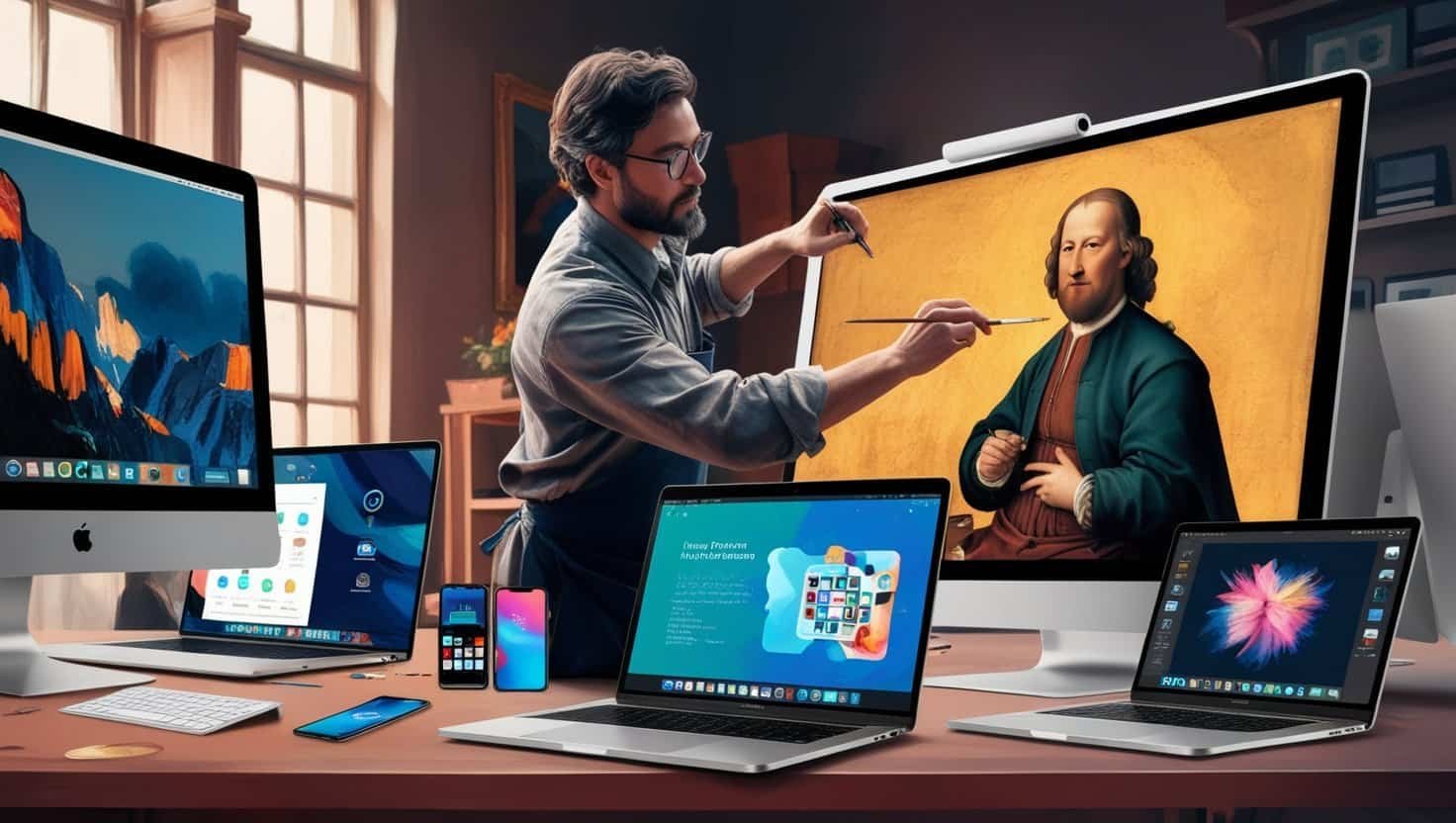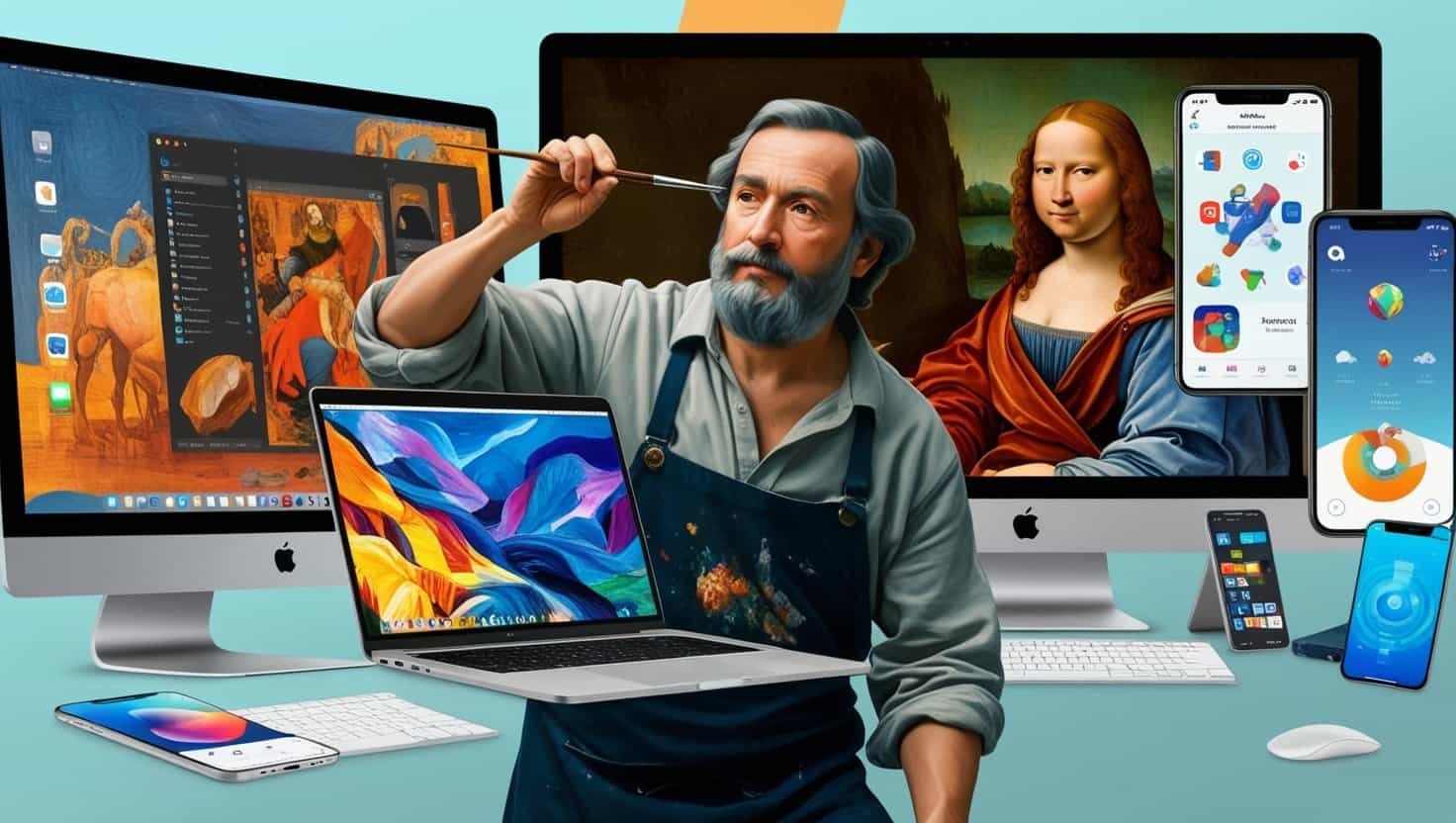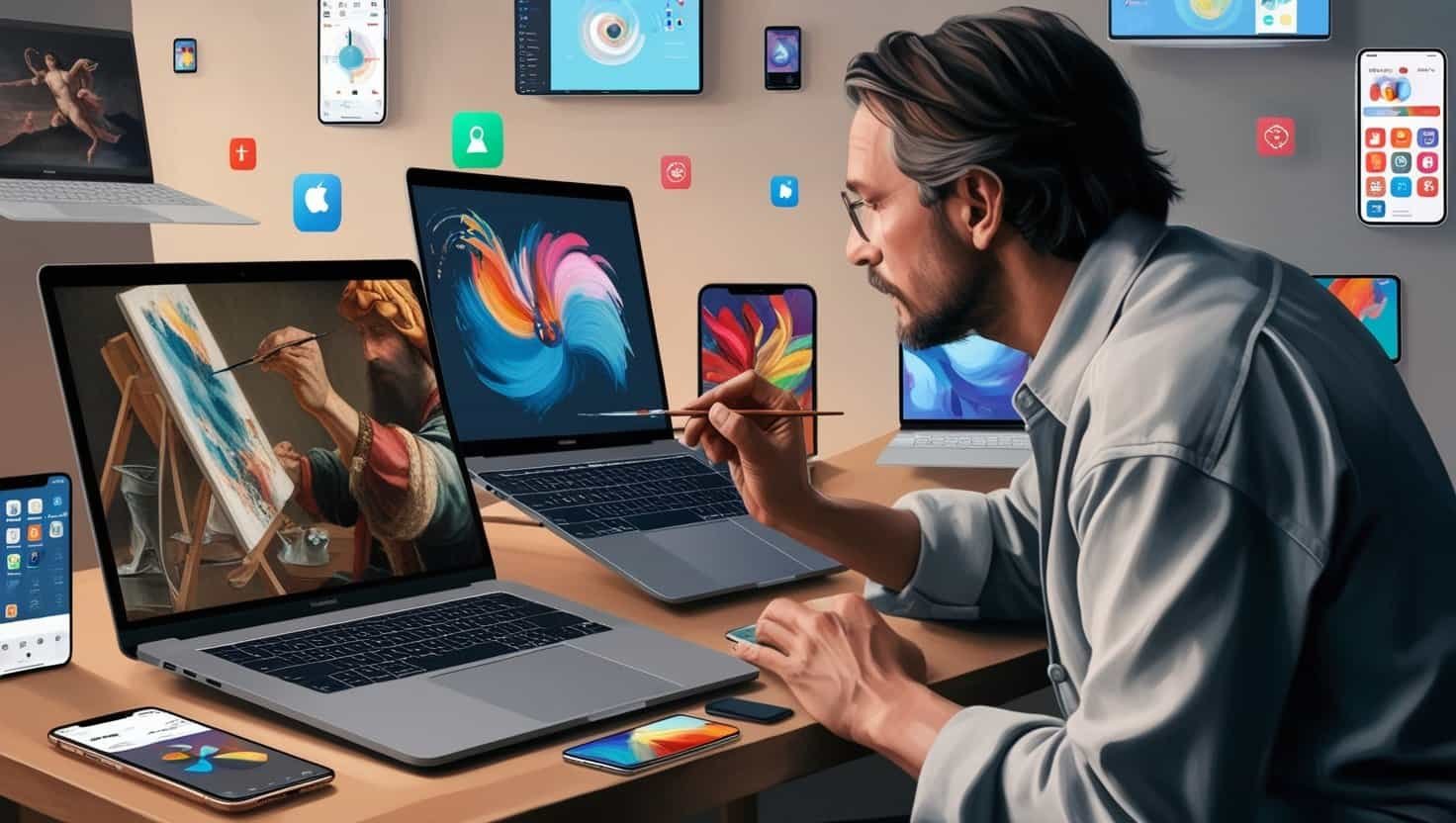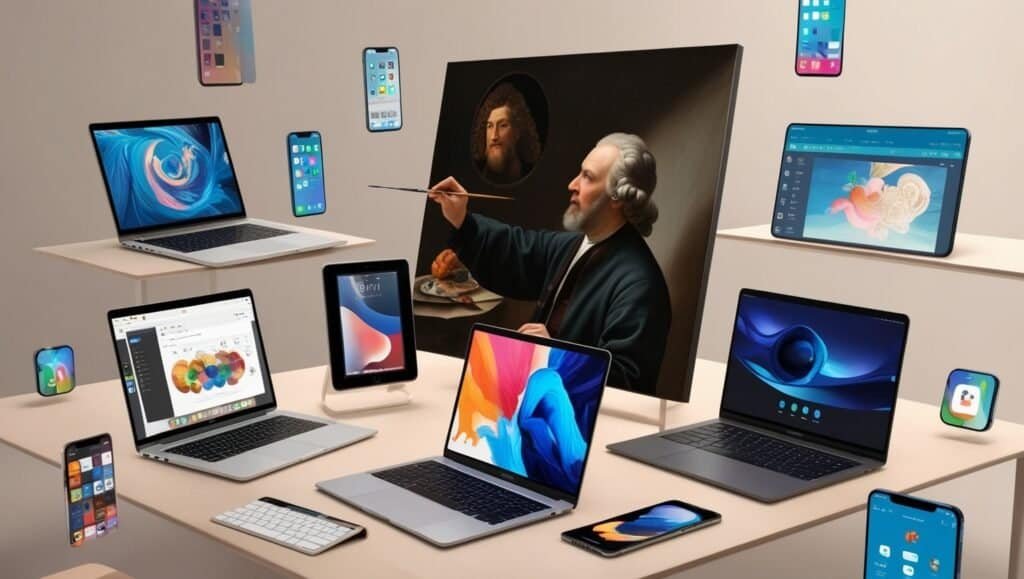Thanks AI image creation and the creative power of AI, artificially intelligent tools such as DALL-E, Midjourney, and Leonardo.ai can create complex imagery with only a few clicks. These AI-powered art tools are opening up new realms of possibility for users who want to create conceptually intriguing and visually beautiful imagery that is simple (or possibly a little scary) to create. As with anything, AI image creation has its own challenges, which we will explore below, as well as the skills you can use to overcome those challenges. This guide will leave you well-equipped to make the most of AI tools in your creative projects.
The Rise of AI in Image Creation
From a far-off prospect for the future of art, it has become an available asset for the creative industries that can generate images – from realistic portraits to abstract works – from a simple text instruction. This is what we call the image paradox: an impressive blend of technology and art that generates something real but is equally obvious and unreal at the same time. It just takes your breath away. The challenges of generating and understanding AI-created artworks require a fusion of knowledge about how the technology works and about the creative process itself.

Understanding AI’s Problem-Solving Mechanisms
At the heart of how images are created on AI are its problem-solving mechanisms – it interprets data, it recognises patterns and uses complex algorithms to create images. The magic at work here is obviously the data processing, machine learning and algorithmic efficiency. These systems are designed to get better at what they do with time – they learn their craft through their very output. They draw on past ‘results’ in order to generate better ones in the next (NETWORK ENCYCLOPEDIA).
But the power of these mechanisms also comes with disadvantages, like the inconstant output of the AI-generated image and the artists’ inability to dictate the exact output. Figuring out how these systems operate and how to manipulate their output is the next step in creating AI images.
Common Challenges in AI Image Creation
1. Inconsistent Outputs
Various artists and critics describe the most fundamental problem in creating AI images as inconsistency. It can output completely different images from one run to the next, using the exact same input parameters. This can be especially frustrating if you’re trying to create an image within a certain style or aesthetic. This comes from the fact that the algorithms in AI are stochastic – that is, they tend to be more creative if you build in some random qualities – but that randomness can produce arbitrary results.
2. Lack of Control Over the Final Output
The lack of control is another huge issue. This is especially so for works of art, since the AI doesn’t possess the back stories and apparatus necessary to render the picture according to the creator’s vision. Sure, AI tools are powerful and can produce many beautiful images, but they’re not infallible. And because they don’t comprehend artistic intent to the level of a human artist, they can’t always produce images according to the original vision behind the imputed prompt. Sometimes, these tools can make surprising interpretations of the inputs, offering up outputs that, while technically impressive, can be artistically all over the place.
3. Data Quality and Bias
In this way, AI is only as good as it is trained. A problem with poor-quality data or biased datasets is that they can lead to sub-par or biased outputs. This is especially concerning when AI is used to generate unreal images of people that are meant to represent varied populations or convey the intricacies of a particular culture. If the training data for the AI is not sufficiently diverse, the outputs can perpetuate stereotypes or have a failure of representation when describing the intended subject matter.
4. Ethical Considerations
Application of AI in creative domains also warrants deeper ethical reflection. It is common for AI algorithms to learn from large data bases, which might include copyrighted material. This raises questions about legal ownership of AI-generated content, and whether such derived work violates the intellectual property rights of the original creators. Insecurity coming along with the ability of AI to make ever more realistic-looking images can also diminish the public, when the images are misused to spread misinformation (checkmyidea-IA: Blog).

Strategies for Effective Problem-Solving in AI Image Creation
1. Embrace Iteration
Iteration is one of the main ways to truly avoid AI images’ inconsistencies. Don’t expect to get the perfect image the first time. Instead, think in terms of iteration. Generate multiple versions of the same image, assess the outputs, and modify your inputs based on what works and what doesn’t. When you do that several times over, you start to steer the AI in the right direction to get the image you want. The more times you do it, the better and more consistent the result. (NETWORK ENCYCLOPEDIA).
2. Master Input Parameters
Many parameters will need to be entered, such as the keywords, the style references and the colour palettes available. The learning process of how to use these input parameters to control the AI’s output is quite important. Try a combination of inputs and see how that would change the output images. If you use some set of keywords, you should feel that the AI system tries to fulfill the theme or the mood that the keywords are trying to describe. Then you could adjust the colour palettes available to change the aesthetics.
3. Utilize Post-Processing Techniques
You shouldn’t expect a flawless image even from the best tools, so post-processing becomes a welcome aid in these situations. Use traditional image editor software – Adobe Photoshop or GIMP, for example – and work to fine-tune it. The post-processing can correct for any potential problems you might have, like a little imperfection in the colour balance or sharpness, and allow for you to put your personal touches on and get the image more in line with your own original intent. This often hybrid approach often results in the best image: something created by AI but finished by human craft.
4. Collaborate with AI
Instead of envisioning that AI might replace human creativity, envision that it is complementary to it. Train it to generate and write initial concepts or drafts for you, and then use your creativity to improve and expand upon them, their interplay enabling novel and original works that otherwise may simply not have occurred. (NETWORK ENCYCLOPEDIA)
5. Stay Informed About AI Developments
The AI space evolves rapidly, and there are always new tools, techniques and tricks appearing on the scene. Keeping up to date with what’s new can help you find new solutions to the problems surrounding AI image-making work. Check in with industry news, interact with DIY-AI online communities and play around with AI toolkits so that you can keep your techniques and skills fresh. Your sustainable advantage comes from being ahead of the curve, ready with a new strategy to overcome an old challenge or take advantage of a new opportunity. Done right, it will help make your work flow more effortlessly. NETWORK ENCYCLOPEDIA
6. Address Ethical Concerns Proactively
However, given the ethical implications of AI, it is important to face these now, so that you can proactively avoid any problems. Make sure that your training data for your AI tools is broad and well-diversified. Also, keep in mind the implications of your own AI-generated images, such as intellectual property rights and potential misuse, and define clear ethical boundaries for your use of AI tools in image creation.
Case Studies: Overcoming Challenges in AI Image Creation
Case Study 1: DALL-E and Concept Art
OPEN AI’S DALL-E, which can generate surreal, sumptuous images from text prompts, is often prone to generating images that are too abstract for what the user intends. While people ultimately ‘fix’ the issue by iterating on their text prompt, gradually tweaking language until they get the result they desire (more concrete, or more abstract), it is perhaps instructive to remember that this is a ‘workaround’, and one that users have a limited understanding of why it even works anyway. (NETWORK ENCYCLOPEDIA)
Case Study 2: Midjourney and Visual Consistency
An AI image generator similar in popularity is Midjourney, which is particularly used in fantasy and science fiction visual art. One challenge that seems to crop up repeatedly with this particular AI is the creation of a series of images that appear visually consistent. This requires the use of style references, using a specific palette of tones and hues, and taking care of post-processing to unify the series. Such a body of work, while produced by machine, can be made to maintain a consistent aesthetic.

The Future of AI in Image Creation
From edge-detection filters to neural networks, future advances in image generation will only proliferate as you learn to master AI image creation. In our rapidly changing landscape, this proficiency will ensure that you’re prepared to exploit these future advancements to the fullest. (NETWORK ENCYCLOPEDIA).
Conclusion
Becoming a proficient problem-solver as an AI image-maker means mastering not just your understanding of the technology and where it falters, but also your own creative process so you can harness the full capability of AI within it. Through iteration, getting the inputs just right, post-processing and collaboration, you can navigate many of the pitfalls of AI-generated art that remain tough challenges today. And by being ready to respond to technological and ethical discoveries with innovation, skill, and ethics, you can ensure you are at the cutting edge of AI image-making, creating images that truly push the envelope of what’s possible.
I highly recommend you get started with AI image creation, if you have just the slightest interest in this field, but haven’t yet dared doing it. So again: You + AI image creation = AWESOME ADVENTURE! The world of AI image creation is vast and filled with endless possibilities, allowing you to express your creativity in ways you never thought possible. Whether you’re an artist looking to enhance your portfolio or a hobbyist eager to explore new mediums, the potential for success with AI image creation is immense. Dive in, experiment, and watch as your unique vision comes to life in stunning ways!

